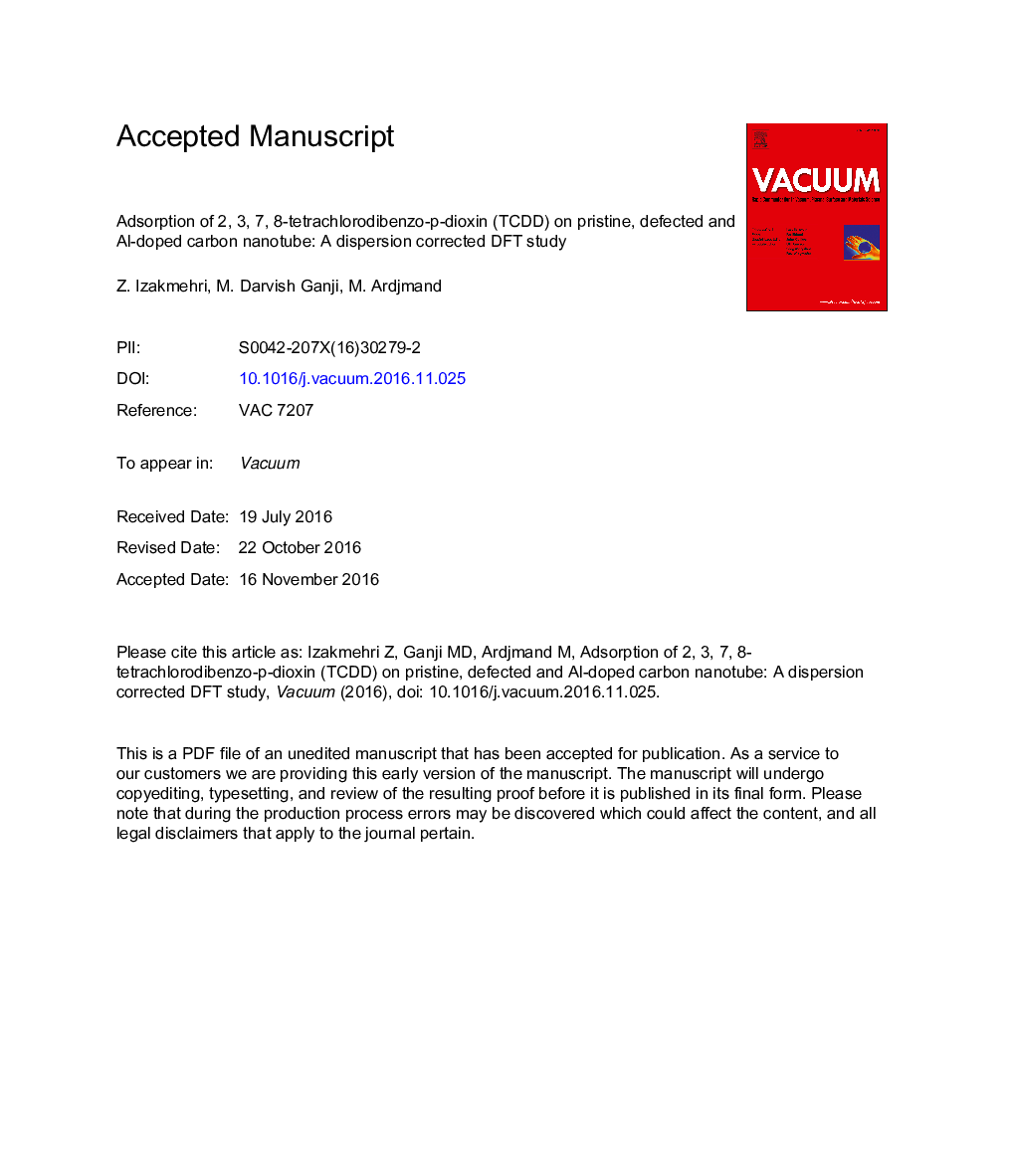| Article ID | Journal | Published Year | Pages | File Type |
|---|---|---|---|---|
| 5468437 | Vacuum | 2017 | 30 Pages |
Abstract
The effective enrichment and detection of organic pollutants in the environment has been attracted much attention because of enormous concerns about human health. Using dispersion-corrected density functional theory (DFT-D2), the interactions between 2, 3, 7, 8-tetrachlorodibenzo-p-dioxin (TCDD) and pristine, defected and Al-doped carbon nanotubes (Al-CNT) were studied. The TCDD molecule was physisorbed on a pure CNT and CNT contain defects with binding energies of about â0.52 eV and â0.34 eV, respectively. The accuracy of our method was validated by hybrid B3LYP levels of theory and it was shown that there is a worthy agreement between two respected methods. However, the binding energy rises to â0.85 eV when TCDD binds to Al-CNT. The increase in binding energy is due to charge transfer from the TCDD molecule to the Al-CNT. Furthermore, the obtained DOS spectra and total charge density indicates that the electronic properties of Al-CNT change considerably by the adsorption of TCDD whereas no such variations are observed for other considered CNTs. Consequently, the Al-CNT is a promising candidate for the TCDD sensing and detection. Our first-principles results present evidences for a rational benchmark for the applicability of the Al-CNT for TCDD adsorption and detection.
Related Topics
Physical Sciences and Engineering
Materials Science
Surfaces, Coatings and Films
Authors
Z. Izakmehri, M. Darvish Ganji, M. Ardjmand,
